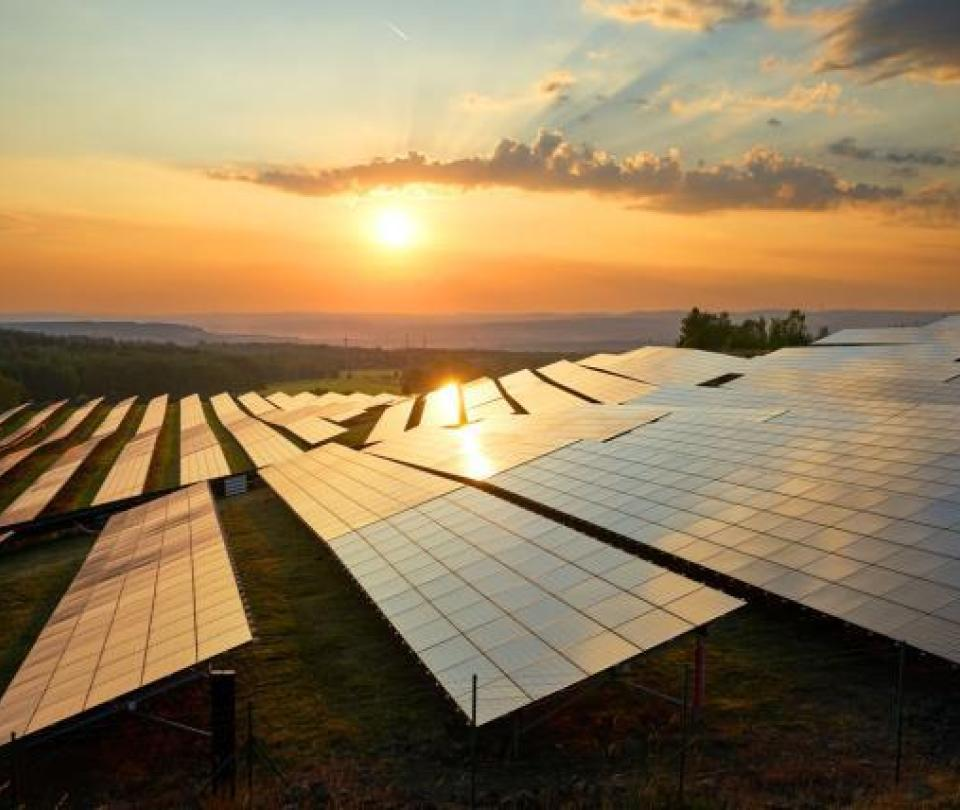The country’s energy consumption matrix is still mostly from non-renewable sources, such as gasoline, diesel and gas. Although electricity generation is mainly renewable, thanks to hydroelectric plants, consumption still depends more on other sources of energy, derived from oil.
(See: Produce 100% clean energy in 10 years, Colombia’s goal).
Now, President Gustavo Petro and the Minister of Mines and Energy, Irene Vélez, have indicated that the country must speed up the energy transition so that consumption can be brought to the use of clean sources.
For this reason, the leader of the energy portfolio has indicated that no more hydrocarbon exploration contracts will be awarded in the country and solar and wind generation will be encouraged.
However, voices from the sector have pointed out that there is no dichotomy between the use of both sources. “They all fit within our matrix because each one has attributes that contribute to our continuing to have a reliable, clean and efficient market.”, explained Natalia Gutiérrez, president of Acolgen.
(See: The importance of the use of gas for the energy transition).
Likewise, Gutiérrez explained that the reinforcement of the system and reliability is given by thermal generation, based on gas and coal. “Thermal generation, which represents 30% of our matrix, has served as support against adverse weather events“, he pointed. This given that plants of this nature are turned on to support the system when hydroelectric plants are not producing at their full capacity.
In the case of consumption, for example, gas is very relevant, since it is the energy used by households as well as for mobility. As this is a type of hydrocarbon, it would be affected by non-exploration. Luz Stella Murgas, president of Naturgas, stated that this type of energy, together with non-conventional renewable energies, “become the most relevant option in the energy matrix for the coming years”.
(See: Agriculture and energy transition, keys to the future of Latin America).
In fact, it highlights that gas is considered a green energy to make the transition and allows reliability, while reducing the country’s emissions while more friendly alternatives are found with the environment.
Green hydrogen is considered one of those options, since neither its production nor its use generate greenhouse gases and it can be stored to be used to produce energy or for industrial consumption. “This versatility makes it a key element in the energy transition”, affirms Mónica Gasca, president of Hydrogen Colombia.
He points out that by 2050, this type of energy could represent close to 10% of the generation matrix and its use in other processes would mean that 14 million tons of CO2 would not be emitted. Experts say that while the matrix should seek to be cleaner, This does not mean that fossil fuels do not allow the energy transition.
(See: ‘Without electricity transmission there is no energy transition’, leader of ISA).
In fact, they assure that the country will continue to need them to a great extent.
Francisco José Lloreda, president of the Colombian Petroleum Association (ACP), assured that Although the country aims to have a greater number of electric vehicles, The goal set of 600,000 by 2030 would not be achieved and, moreover, the number of vehicles that use fossil fuels will be greater than 50 million, with which the demand for petroleum derivatives will be significant.
A report from the Vice Presidency of Economic and Regulatory Affairs of the ACP estimated that even by 2050, liquid fuels will be the largest share in the demand for mobility. For this reason, they assure that although a transition must be made, it must contemplate several pillars, such as the relevance of hydrocarbons, while the use of clean transport is promoted and the energy matrix grows to cover that potential additional demand. For this reason, Lloreda assures that if the exploration stops,As a consequence, it would be that we depend on the importation of these fuels, which represents greater contamination and that the price grows.
(See: Sustainability, an axis to promote in the Caribbean region).
The leaders assure that the country must promote the compensation of emissions, the greater electrification through renewable sources while maintaining energy autonomy. This will allow a stable, autonomous service to be provided at competitive prices that will lead to a constant decrease in energy poverty. Therefore, diversity in energy sources will be essential.
The National Government promised to reduce the country’s emissions by 51% and be net zero by 2050. For this, a series of priority factors that will allow reaching this goal.
The first of these priorities refers to the strengthening of knowledge; followed by biodiversity management, sustainable production and consumption, the just transition of the workforce in disincentivized sectors, rural development, sustainable cities, a diversified energy matrix, mobility and sustainable infrastructure and adaptation of the population and the health system in the face of events related to climate change.
With these pillars, the Government estimated that with these points it could be carbon neutral. Added to this are the strategies of the private sector that is working for this objective.
BRIEFCASE
















Add Comment